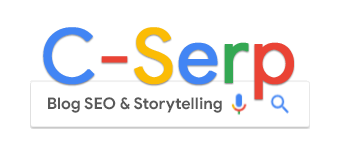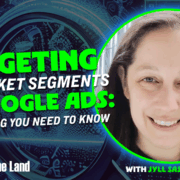Google Ads In-Market Segments: Your guide to High-Intent audiences

Wouldn’t it be great if you could click a button and magically reach everyone who’s interested in your products or services?
Well, in-market segments in Google Ads are pretty close to that!
This type of audience targeting allows you to reach people based on the products or services they’re currently researching. The goal is to get them to research and buy from you.
In this article, I’ll walk you through everything you need to know about these high-intent audiences, including:
- What are in-market segments in Google Ads?
- What Google Ads campaign types are compatible with in-market segments?
- What should I do if there’s no in-market segment for my category?
- What are the limitations of in-market segments?
- Who should use in-market segments?
What are in-market segments in Google Ads?
In-market segments are one of the four types of audiences you can target using Google’s data. (The others are detailed demographics, life events and affinity segments).
When Google adds a user to one of its in-market segments, it’s because Google recognizes that they are actively looking to buy something. It’s not just about interest; there has to be clear intent.
Google has a pretty good idea of what we’re doing online and offline. They piece together information from the websites we visit, the apps we use, our Google searches, and even our real-world movements. By analyzing all this behavior, Google can figure out the products or services we’re researching or seriously considering purchasing.
What Google Ads campaign types are compatible with in-market segments?
Audiences in Google Ads can be complicated, and in-market segments are no exception. You can target, observe, or exclude in-market segments across Google’s various campaign types. Here’s your compatibility cheat sheet:
- Targeting: You can directly target in-market segments in Search, Shopping, Display, Demand Gen, and Video campaigns. You can also include them in audience signals in your Performance Max campaigns; this will treat them as a “signal” and not true “targeting.” And you can add in-market segments to combined segments, which you can then target in Search or Display campaigns for more niche, refined audience targeting.
- Observation: If you want to gather more data and insights without limiting your reach, you can set in-market segments to “observation” mode in your Search, Shopping, and Display campaigns. This lets you see how these segments perform without restricting who sees your ads.
- Exclusion: You can exclude specific in-market segments in Search and Display campaigns. This is useful if you know certain segments are not a good fit for you, and you want to prevent your ads from showing to them. Note that you can no longer exclude in-market segments from Demand Gen or Video campaigns, since they now use Audience Builder.
What should I do if there’s no in-market segment for my category?
Although there are more than 1,000 different in-market segments to choose from, they can’t cover every single product, service, or offer in your business. If there’s not a good fit, consider one of these three alternatives:
- Choose an “adjacent” in-market segment. For example, if you sell stroller wagons, there is no “in-market for stroller wagons” segment, but there is “in-market for strollers,” which is similar. Then, it’s up to your creative to pre-qualify users, to ensure only those who want a stroller wagon, and not just a stroller, engage with your ads
- Choose a different Google audience. For example, sticking with stroller wagons, the target consumer for this product likely has a preschool or kindergarten aged child. This is different from strollers, which are usually purchased by parents of infants or pregnant people. So, why not target the detailed demographic segment “parents of preschoolers”? This group is likely to be interested in a stroller wagon, even if they’re not actively displaying that intent right now.
- Build your own audience with custom segments. For certain niches, the pre-built Google audiences just won’t cut it. You can create a custom segment by defining the kinds of things users search for, the types of websites they visit, and/or the types of apps they use. Once you build this custom segment (sometimes called a custom interest), you can then target it in a Demand Gen, Video, or Display campaign, or add it as an audience signal to a Performance Max campaign. This allows you to essentially create your own “in-market” group based on very specific behaviors relevant to your business. For our stroller wagon example, you could create a custom segment of people who’ve recently searched for “stroller wagon,” or companies that are known for their stroller wagons.
What are the limitations of in-market segments?
While in-market segments can be powerful and easy to use, they may not be the right fit for products or services with a very short consideration window.
For example, let’s say you’re advertising a hotel in Paris. Targeting people in the “trips to Paris” in-market segment makes perfect sense because planning a trip to Paris usually involves a significant research and booking period, say 6 to 12 months.
However, consider something with a much shorter decision-making process, like contact lenses. People often research and buy contact lenses within 24 to 48 hours.
By the time Google identifies enough behavior to place someone into an “in-market for contact lenses” segment, they will have probably already made their purchase. In such cases, relying solely on in-market segments might mean you’re showing up too late.
Always keep your business’s typical research and consideration length in mind. If your product has a quick decision cycle, you might need to augment your strategy by looking at adjacent in-market segments or other audience types that catch users earlier in their journey. It’s all about reaching the right person at the right time in their buying process.
Who should use in-market segments?
In-market segments are the “lowest funnel” and highest intent option among Google’s pre-made audiences. This usually means a higher likelihood of conversion, which makes them an excellent starting point if you’re just getting started with audience strategies.
If you’re already leveraging in-market segments, you may want to expand next into life events segments or custom segments to reach additional relevant and high-intent users. Just make sure you have compelling creative to match!
This article is part of our ongoing weekly Search Engine Land series, Everything you need to know about Google Ads in less than 3 minutes. Every Wednesday, Jyll highlights a different Google Ads feature, and what you need to know to get the best results from it – all in a quick 3-minute read.


